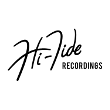
Posted on Jan 27 2019 12:07 PM
artdecade wrote:
Cool stuff, but I would like to add that the best judge is your ear. The 6-6-6 thing is a swell idea, but not all amps have the same tone stacks. There have been variances over the years and component drift, so on and so. Plus, every room impacts the sound. Where the amp is located in relation to a wall impacts the sound. The angle of the speaker cone in relation to the ear impacts the sound. Figure out the tone you want and dial it in, but remember that the controls are never pre-determined - not even for Brian Setzer.
I’ll use your reply as a jumping-on point for my own thoughts. As you mention, not all tone stacks are created equally. The tone stack of various eras of Fender amps changed. 6-6-6 on a Tweed Bassman is not 6-6-6 on a Blackface Twin. One of the first things I learned at Surf 101 is that a Brownface Showman was quite distinctly different from a Blackface Twin. The amps had different sonic characters and an apples:apples comparison is hard to make. But there are other factors to consider.
One factor would be all of the other things that affect the sound coming out of an amp and how we would hear that sound; the speakers themselves, the design and dimensions of the speaker cabinet (size, proportion and open vs closed back, for instance) and the intangibles of the room the amp is in.
Patch cable impedance (especially the capacitive component) and length has a great effect on sound, likewise output and input impedances. Plug a long cable, or a string of true bypass effects into a relatively low impedance input somewhere in the signal chain, and the greatest gear in the world will sound listless and washed out, because the relative effect of the capacitance up to that point will be greater. It is exactly the same thing that would happen were you to place a treble band tone control into the circuit and turn it way down. Capacitance in the signal path is unavoidable, but it has to be carefully managed or it will wreak havoc on your sound.
Perhaps the toughest thing about this entire subject is that it’s all subjective. I’ve seen YouTube videos where someone will extol the virtues of their latest “tone secret” and they will go to all sorts of lengths to present a scientific argument, but they always seem to end up at ‘if you do this, it sounds better’. The problem is, how they are defining and measuring what ‘sounds better’. Once our senses come into play, the waters grow quite murky.
When Bell Labs was inventing the science of acoustics, so they could quantify volume levels and insure that calls were of predictable volume and quality, they were faced with that very dilemma. Measuring sound had never been done and in order to establish a baseline, they had to perform experiments on large groups of test subjects. If one person was asked to evaluate changes in volume, the results would be meaningless, but if 500 test subjects voted (anonymously) regarding their perceptions, a distribution curve could be created and the truth ascertained. This is where the “bel” came from; a unit of the perceived doubling of volume. The bel was decimated into the decibels which are used in sound measurement, to this day. These is also where the Equal Temperament Curves (AKA Fleischer-Munson Curves) which determine the power required to present an evenly perceived volume, at different frequency ranges.
If someone wanted to evaluate the effect of tone settings on the sound of an amp, it would take a similarly large group of test subjects and the terms would have to be carefully defined, because “which sounds better” is entirely subjective and involves tastes as well as perceptions. What sounds good to me is an early ‘60s sound and I would not be a good person to judge sonic variations in lates ‘60s music, because I don’t like heavy distortion; period.
Of course there is another way to do this, and I think Leo Fender did this, himself. What if you had a huge group of test subjects numberin I to the millions, and had them vote for their favorites by means of which songs they bought. In the fifties, adults tended to dislike rock n’ roll, but teens voted for that music at the record store. By the very beginning of the sixties, a cleanish sound was prominent and record sales bore that out.
In ‘65, the Stones came out with Satisfaction and the public voted in distorted guitars as their candidate of choice for ‘good sounding’. For decades afterward, a cranked Marshall was the candidate of choice in the youth market, while Country was more in favor of a clean amp with lots of reverb, along the lines of the Blackface sound. The balance of public tastes vary and sometimes the move dramatically because of just on hit song. There is no absolute definition and while there are some great ideas for amp settings, it still comes down to individual tastes.
—
The artist formerly known as: Synchro
When Surf Guitar is outlawed only outlaws will play Surf Guitar.





































